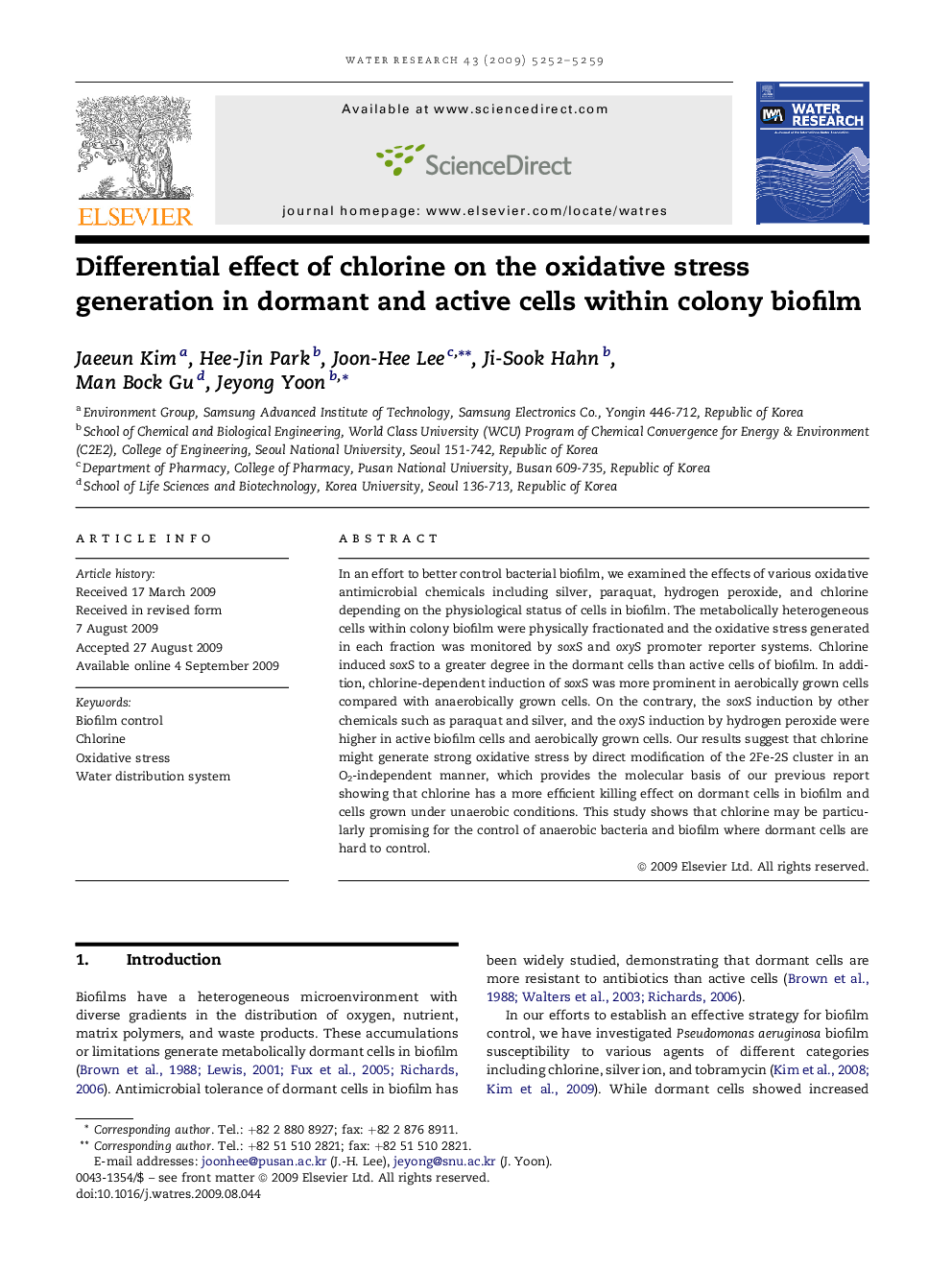| Article ID | Journal | Published Year | Pages | File Type |
|---|---|---|---|---|
| 4485390 | Water Research | 2009 | 8 Pages |
In an effort to better control bacterial biofilm, we examined the effects of various oxidative antimicrobial chemicals including silver, paraquat, hydrogen peroxide, and chlorine depending on the physiological status of cells in biofilm. The metabolically heterogeneous cells within colony biofilm were physically fractionated and the oxidative stress generated in each fraction was monitored by soxS and oxyS promoter reporter systems. Chlorine induced soxS to a greater degree in the dormant cells than active cells of biofilm. In addition, chlorine-dependent induction of soxS was more prominent in aerobically grown cells compared with anaerobically grown cells. On the contrary, the soxS induction by other chemicals such as paraquat and silver, and the oxyS induction by hydrogen peroxide were higher in active biofilm cells and aerobically grown cells. Our results suggest that chlorine might generate strong oxidative stress by direct modification of the 2Fe-2S cluster in an O2-independent manner, which provides the molecular basis of our previous report showing that chlorine has a more efficient killing effect on dormant cells in biofilm and cells grown under unaerobic conditions. This study shows that chlorine may be particularly promising for the control of anaerobic bacteria and biofilm where dormant cells are hard to control.
